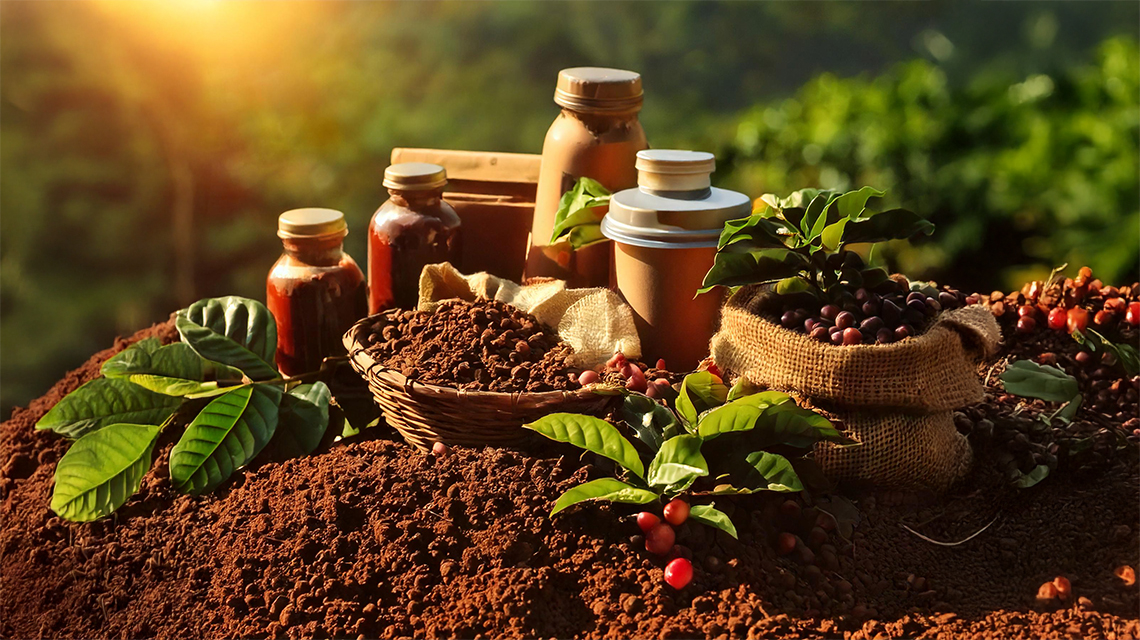Italian National Agency for New Technologies, Energy and Sustainable Economic Development

Environment: From spent coffee ground new food and agricultural products
ENEA has identified some beneficial molecules found in coffee [1] suitable to produce food ingredients, nutraceuticals, cosmetics and fertilizers [2]. Published in the trade journal Plants, the research was conducted with the support of several Mexican research institutes (El Collegio de Michoacàm, Istituto Tecnològico Superior de Zongolica CONAHCYT) and the International Italo-Latin American Organization (IILA). The study is of particular importance as it highlights the properties of cascara (dried husk), among the least-characterized coffee by-products.
“Coffee bean waste, often viewed as a problem, thanks to scientific research it can be seen as a valuable source of beneficial molecules like antioxidants, polyphenols, carotenoids, flavonoids and minerals, useful to make value-added products in various sectors,” explained ENEA researcher Loretta Bacchetta, coauthor of the study with Oliviero Maccioni (Circular Regenerative Bioeconomy Laboratory), Gianfranco Diretto and Sarah Frusciante (GREEN Biotechnology Laboratory).
“We have identified the highest recorded number of non-volatile molecules in dried cascara, as many as 93, paving the way for its better reuse, in line with circular economy and bioeconomy principles, generating additional income for coffee farmers,” said Oliviero Maccioni.
ENEA chose Mexico as a case study for this research, specifically the mountainous Sierra de Zongolica area in Veracruz, where high-quality coffee is grown without the use of pesticides, fertilizers and other chemicals.
“In that region of Mexico, traditional agricultural systems face significant challenges due to climate and sociocultural changes, as well as asymmetrical trade relations (about 80 percent of the profit goes to the companies that buy it there),” Bacchetta said. “That’s why” he said ”a group of 20 coffee-growing families has diversified their product range utilizing coffee by-products, particularly dried cascara in the form of fertilizer (40 percent) and beverage infusion (5 percent). Cascara could also be used as a nutritional and functional additive in food products, as is already happening in Switzerland.”
In addition to cascara, other coffee processing by-products like parchment [3] and silverskin [4], can act as antioxidants and antifungal additives due to their polyphenolic compounds. In particular, parchment can be used as a herbicide around fruit trees, while silverskin can become a food ingredient, food thickener and colorant and be used in infusions and to improve the physical and chemical properties of agricultural soil in the cultivation of edible mushrooms.
Coffee cultivation takes place primarily in developing countries in between the two tropics and accounts for a sizeable share of their export earnings. A key source of income for more than 25 million families, coffee is the second most traded commodity in the world, surpassed only by oil. World production for 2023-2024 is estimated at about 180 million 60-kilogram bags (57 percent Arabica quality and 43 percent Robusta), while by-products (from both fresh product processing and roasting), are calculated at about 840 million bags over the two-year period. "Considering international coffee price volatility, environmental factors like climate change and pests, the trade and valorization of coffee by-products could be beneficial to producing families, the global coffee industry and the environment," concluded Loretta Bacchetta.
